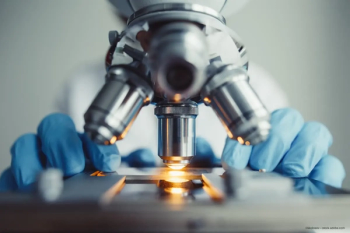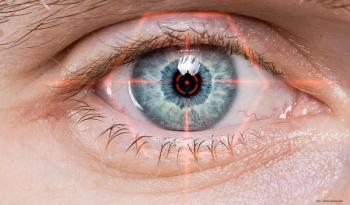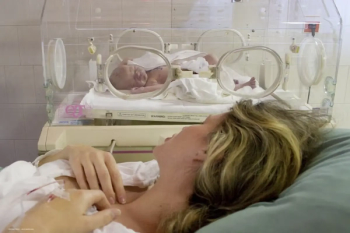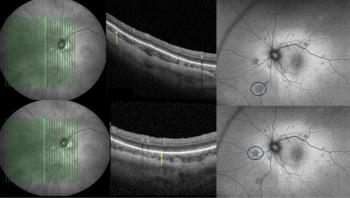
Device renews hope for artificial vision
Visual cortical prosthesis intended to create artificial form of useful vision for blind individuals
The visual cortical prosthesis system is designed to bypass diseased or injured eye anatomy and to transmit these electrical pulses wirelessly to an array of electrodes implanted on the surface of the brain’s visual cortex, where it is intended to provide the perception of patterns of light.
Reviewed by Nader Pouratian, MD, PhD
A novel visual cortical prosthesis system (
The FDA recently approved the system for an
“We need to realize that the goal of a system, such as [this], is not to restore vision as we know it in sighted individuals, but to restore visual perception to blind people to allow better function in and interaction with the world,” said Dr. Pouratian, associate professor of neurosurgery, Ronald Reagan UCLA Medical Center, Santa Monica, CA. “In achieving that goal, we are making huge progress.”
The visual cortical prosthesis system is designed to bypass the eyes and optic nerve, i.e., the diseased or injured tissue. Patients wear a miniature camera mounted on a pair of eyeglasses, an antenna, and a video processing unit (VPU).
The camera captures real-time images as processed by the VPU and then converted into stimulation patterns that are transmitted wirelessly to an electrode array implanted on the surface of the primary visual cortex. The system has 60 electrical contacts that deliver the stimulation to the brain, he noted.
The feasibility study is being conducted by Dr. Pouratian;
Specifically, three patients suffered a trauma, two had glaucoma, and one had endophthalmitis. To now, the average time after implantation is about 12 months. During the first testing of the device after implantation, 2 weeks postoperatively, each electrical contact is turned on individually to determine at what level of stimulation results in a visual perception, i.e., phosphenes.
RELATED:
“Every patient saw some visual perception in response to stimulation at almost every electrode when activated,” Dr. Pouratian said. “Patients described phosphenes of different shapes that appeared as a spot of light, a circle, an oval, or a line.”
Visual rehabilitation
Patients work with visual rehabilitation specialists once they begin to use the device at home. “A major step is their learning how to use the device in a meaningful way,” Dr. Pouratian said. “The visual perceptions of these patients who have bare or no light perception are not the same as those of sighted individuals, but we have found that the visual perceptions can be meaningful changes to them.”
Some of the subjects can use the device to perform square localization, i.e., the ability to identify a square presented on a screen. When
More significant than objective testing, however, is real-world use of the device. For instance, one patient was able to locate a cue ball on a pool table. Another patient described cars that were parked on the side of the street and the direction in which other people on the sidewalk were moving and how the device allowed him to navigate better. Investigators reported the occurrence of five
Accelerated development
With encouraging results from the first six subjects, the company is on a path to accelerated development of the visual cortical prosthesis system, explained
“With five subjects out to the 1-year mark, the company has increasing confidence in the clinical data,” he said.
Because the
Finally, the visual cortical prosthesis system is a more attractive platform, in that its technology and the visual quality and usefulness can be improved more compared with Argus, i.e., the potential use of more electrodes and, thus, many more pixels and the treatability of both brain hemispheres to increase the field of view and visual quality, he noted.
RELATED:
Technologic improvements envisioned by McGuire for the visual cortical prosthesis system include electronics enhancements so that many more electrodes can be used, i.e., a 169-channel chip compared with the current 60.
Other complementary technologies to artificial vision being pursued by Second Sight are object and facial recognition software, which will inform the user of what or who is the viewed object, and infrared imaging, in which the stimulated vision is produced by heat to facilitate locations of objects.
McGuire is hopeful about reimbursements by the
What about Argus II?
Second Sight Medical Products remains committed to
“We have next-generation externals, Argus IIs, under development that include new eyewear, camera, and more powerful VPU to upgrade the current patients,” he said. “We will supply eyewear and VPU replacements as needed. Personnel will be available to evaluate the technology and provide changes to the settings to optimize the vision as it changes over time,” he said, and forecasts the new externals to be available before the end of 2019.
RELATED:
Disclosures:
Nader Pouratian, MD, PhD
E: [email protected]
Dr. Pouratian is a consultant to Second Sight Medical Products.
Jessy D. Dorn, PhD
E: [email protected]
Dr. Dorn is an employee of Second Sight Medical Products.
Robert Greenberg, MD, PhDDr. Greenberg is a consultant to Second Sight Medical Products.
Newsletter
Get the essential updates shaping the future of pharma manufacturing and compliance—subscribe today to Pharmaceutical Technology and never miss a breakthrough.













































